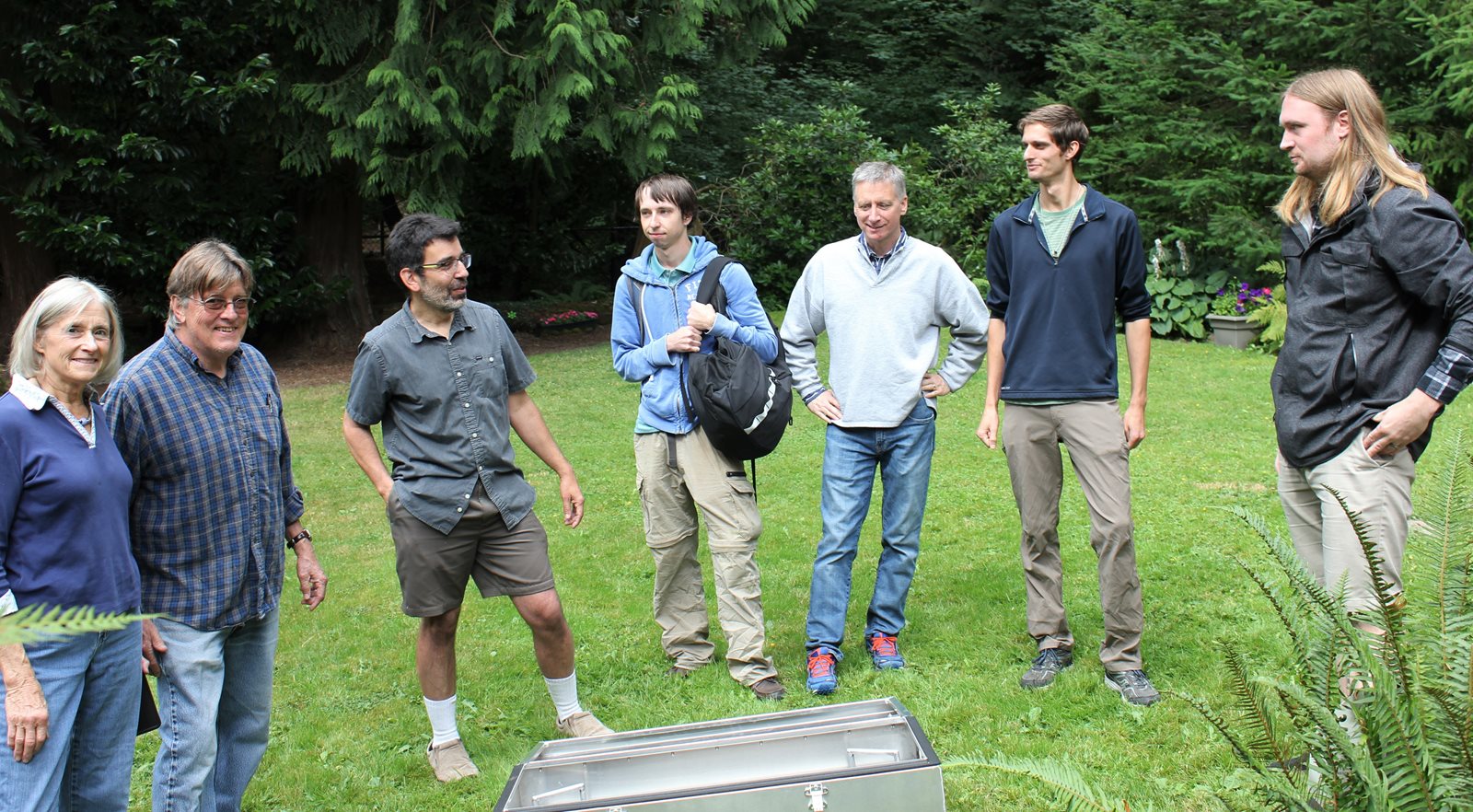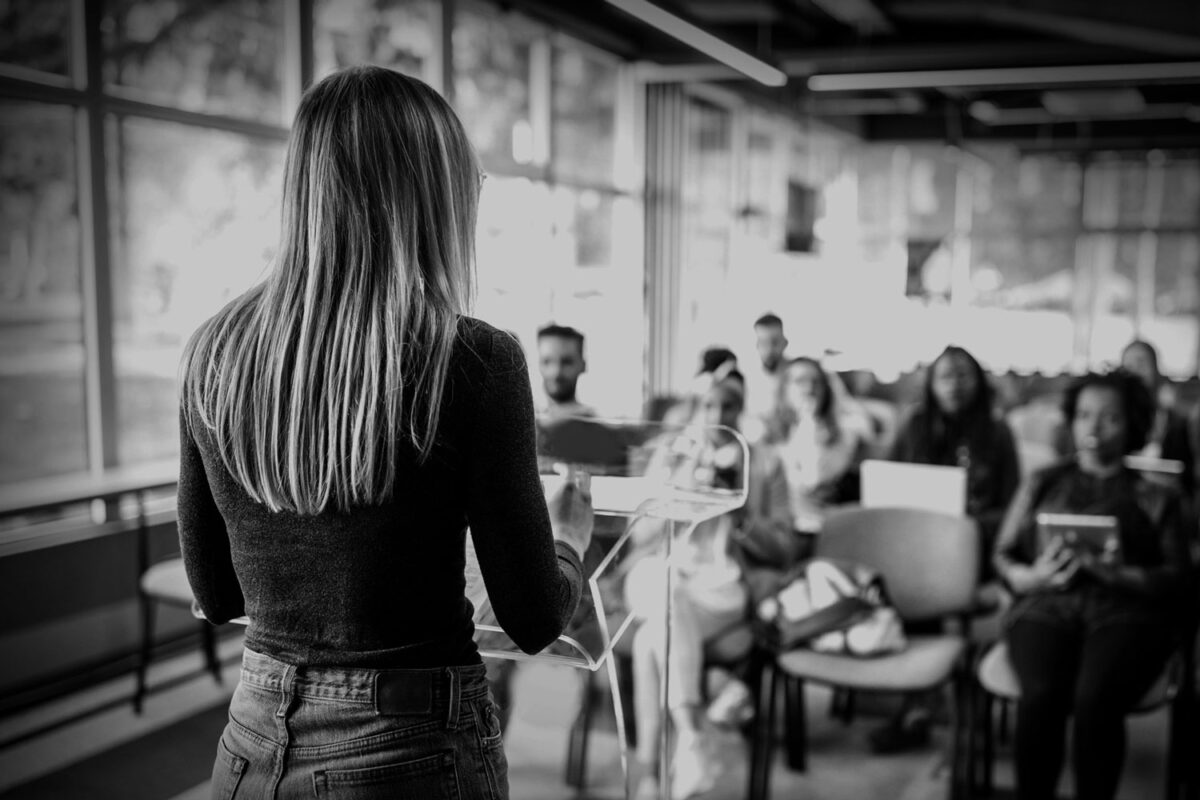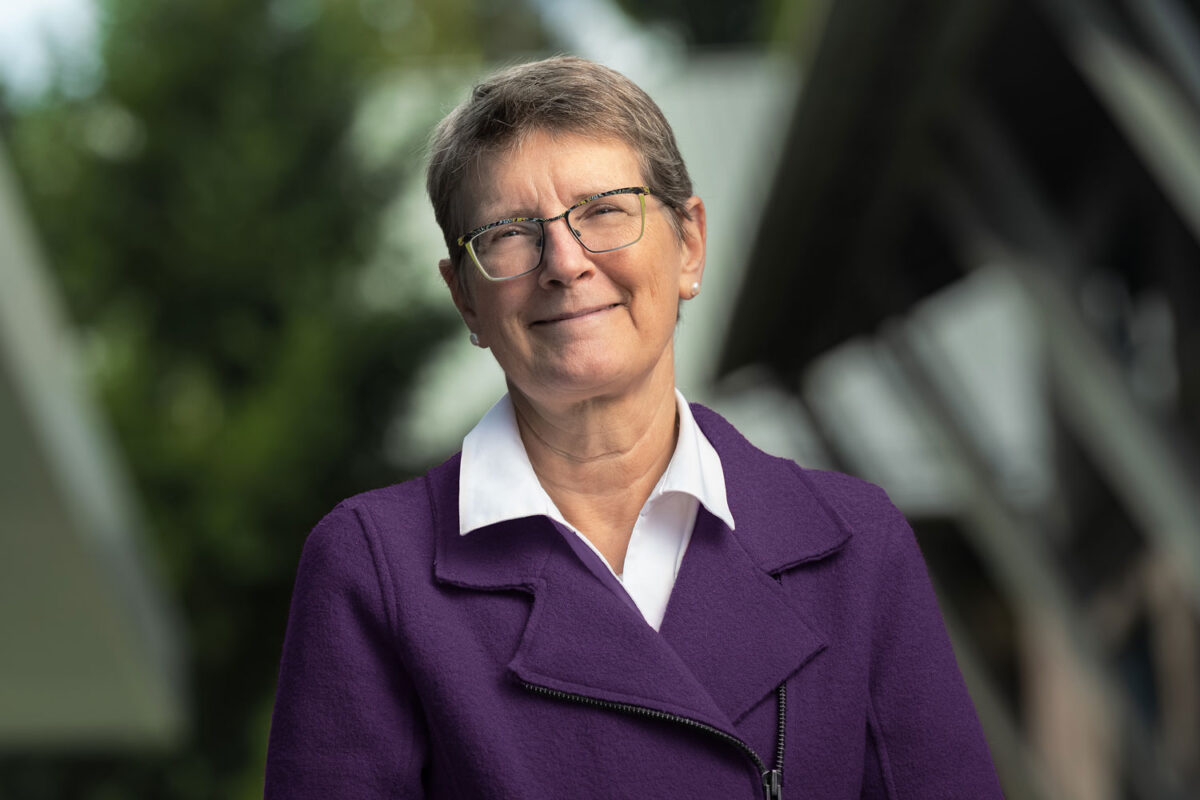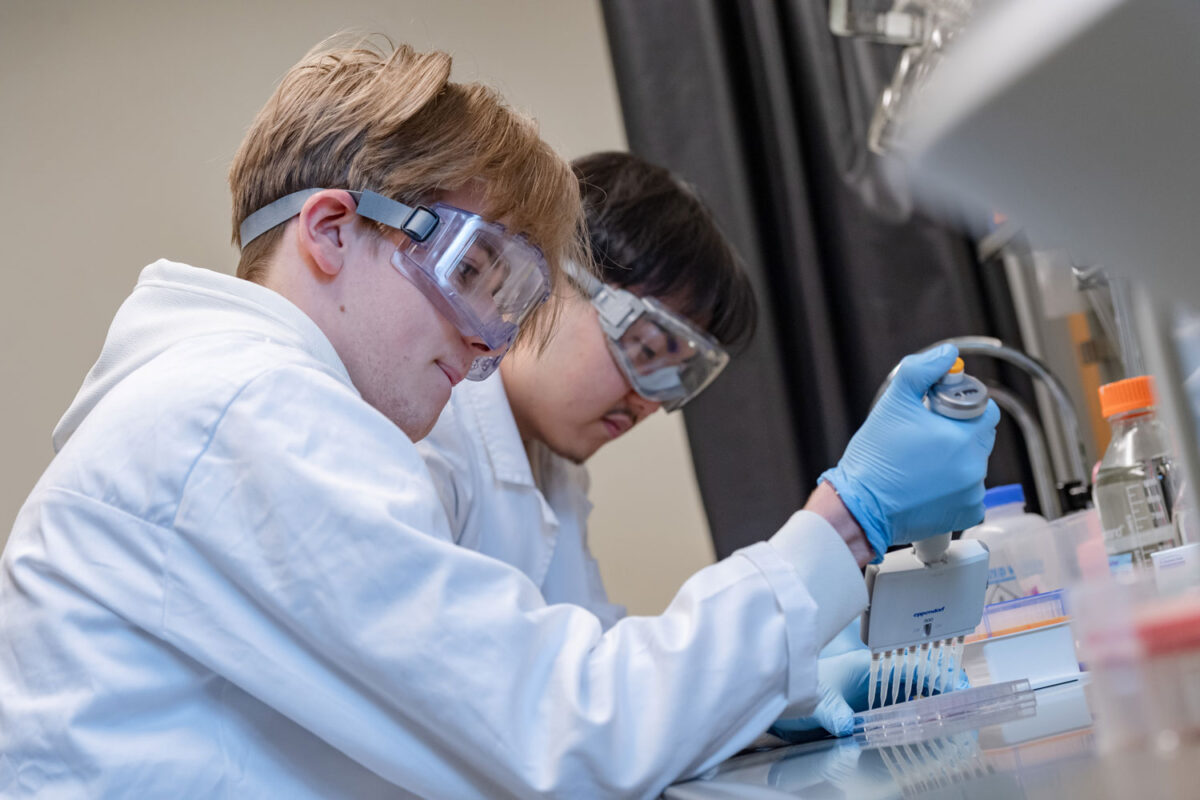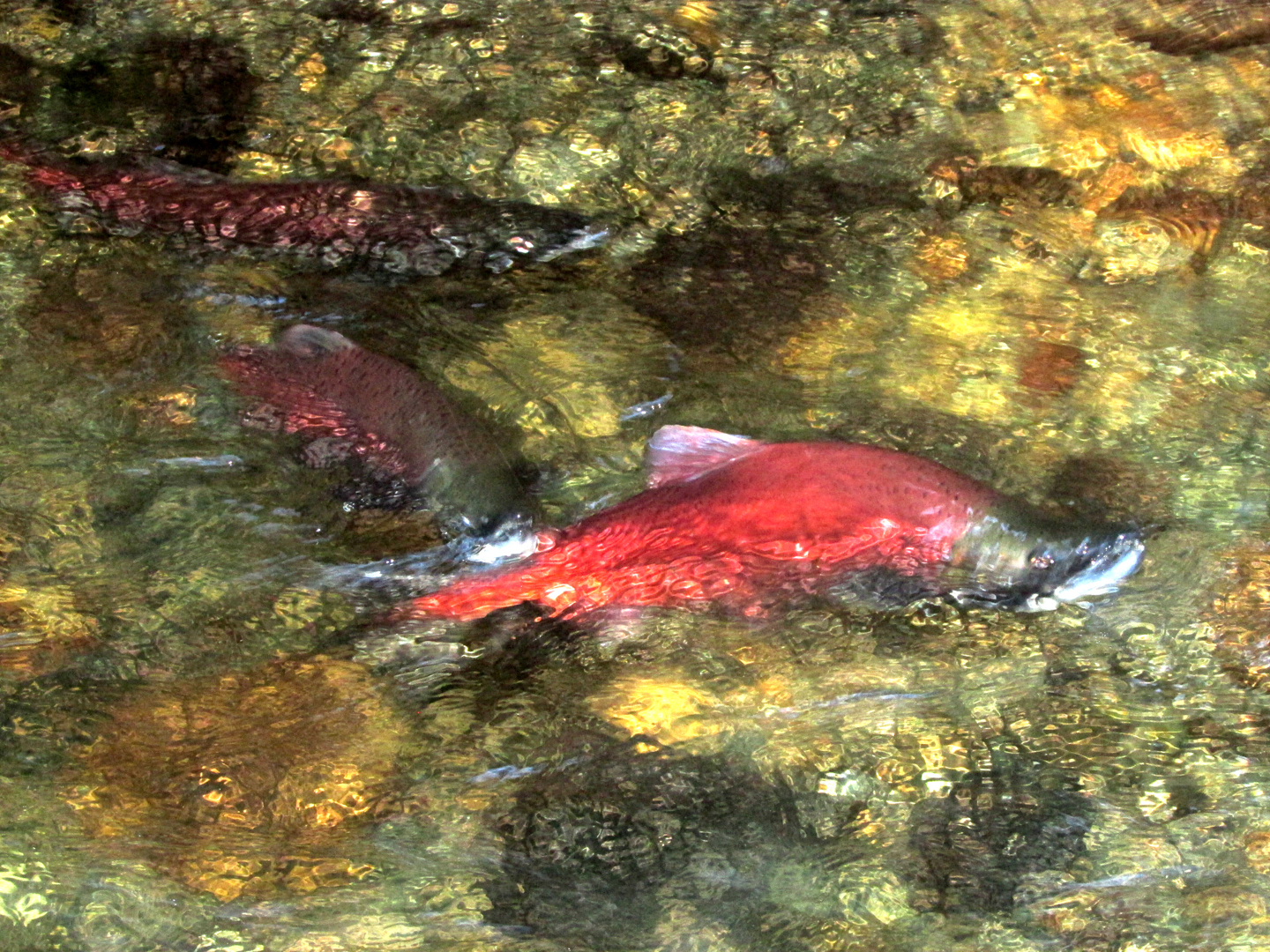
By Douglas Esser
Pioneer settlers in the Lake Washington watershed recorded that streams would be filled with “little red fish” — kokanee, the smaller landlocked relatives of sockeye salmon that share their red body color.
More than a century of logging and urbanization have eliminated true kokanee from Lake Washington, but some survive in Lake Sammamish, said Jeff Jensen, a senior lecturer in biology at the University of Washington Bothell. He would love to see fish like kokanee return to Lake Washington streams such as Lyon Creek, which flows through the nearby town of Lake Forest Park where Jensen lives.
“Like most urban streams, Lyon Creek is heavily impacted by runoff,” Jensen said. “One of the problems for salmon and particularly kokanee is unregulated runoff.”
Jensen, UW Bothell colleague Rob Turner and some of their students are working on a project to return kokanee to Lyon Creek. Jensen hopes to rebuild the run by 2025 by putting fish eggs in a remote site incubator. Turner is monitoring the water quality of storm runoff, and he intends to test the effectiveness of adding filters in catch basins.
One morning in July, Jensen, Turner and their students gathered at the Lake Forest Park home of Byron and Connie Barnes where the rippling sounds of two creeks serenade their peaceful backyard. A tiny spring-fed rivulet, McKinnon Creek, runs right under their back porch deck near where it joins Lyon Creek.
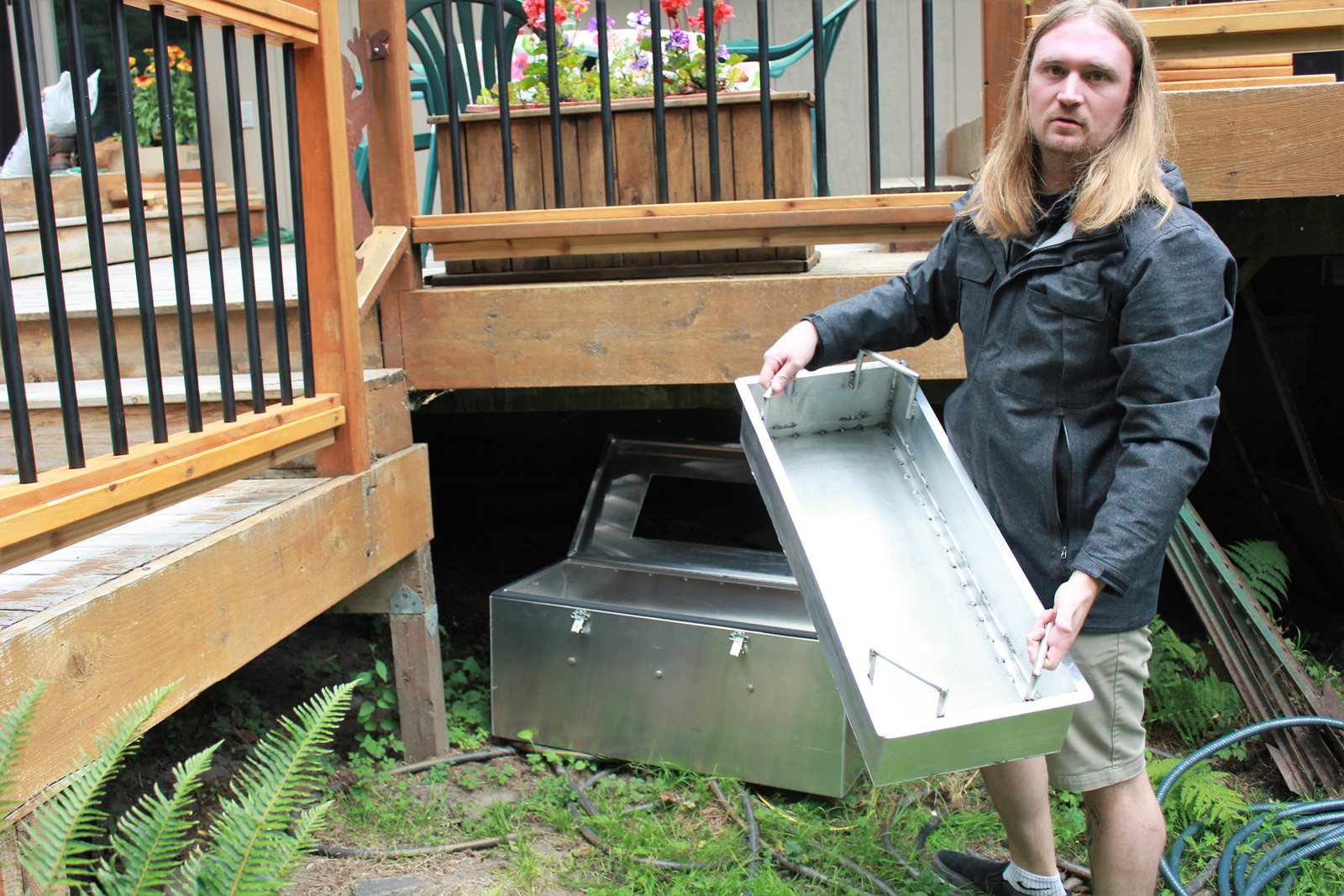
That morning, the UW Bothell crew carried the incubator, an aluminum box about the size of a coffee table. They wanted to see how it would fit in its intended site — under the deck, tapping McKinnon Creek. They found it will work.
“This is an ideal setting with nice clean water, a nice elevation drop that we can use,” Jensen said.
By the fall, they plan to have as many as 2,000 salmon eggs in the incubator. By March 2019, the tiny fry, looking like pine needles with eyes, could be making their way down Lyon Creek, past the Lake Forest Park shopping center, under Highway 522 and into Lake Washington.
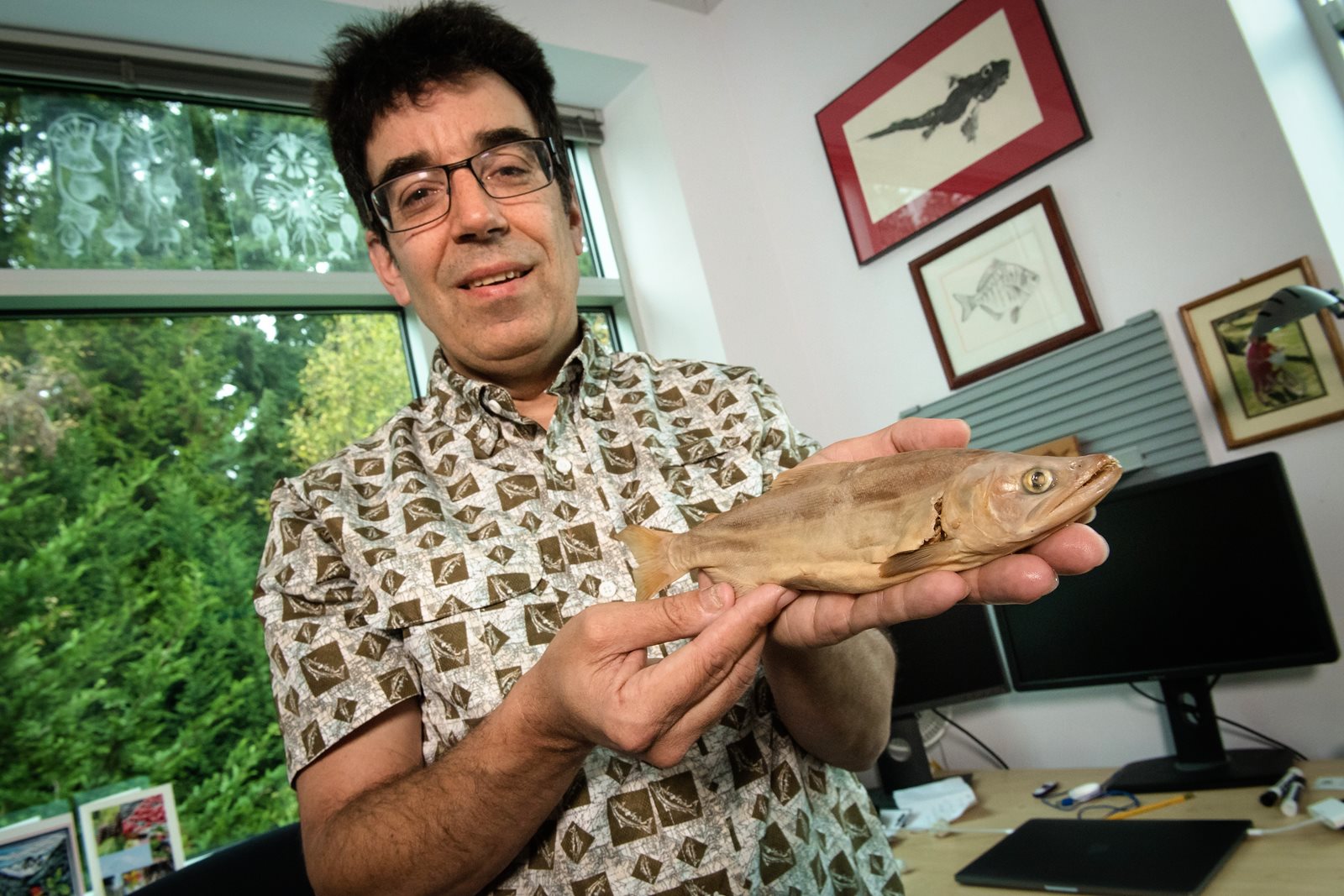
It’s a doubly important project for Jensen. He’s directing the incubator work as a faculty member in the School of Science, Technology, Engineering & Mathematics. He’s also on the board of the Lake Forest Park Stewardship Foundation, which received a $37,500 grant from the King County Wastewater Treatment Division for the incubator and Turner’s water quality monitoring. The city of Lake Forest Park, Lake Forest Park StreamKeepers and several other environmental groups are collaborating on the project.
Turner, who teaches environmental science in the School of Interdisciplinary Arts & Sciences, has researched water filtering in the campus wetlands. His students will be testing commercial filters in seven storm drains near Lyon Creek. They also are measuring pollutants in water that flows off the Lake Forest Park shopping center parking lot, through a new rain garden and into Lyon Creek.
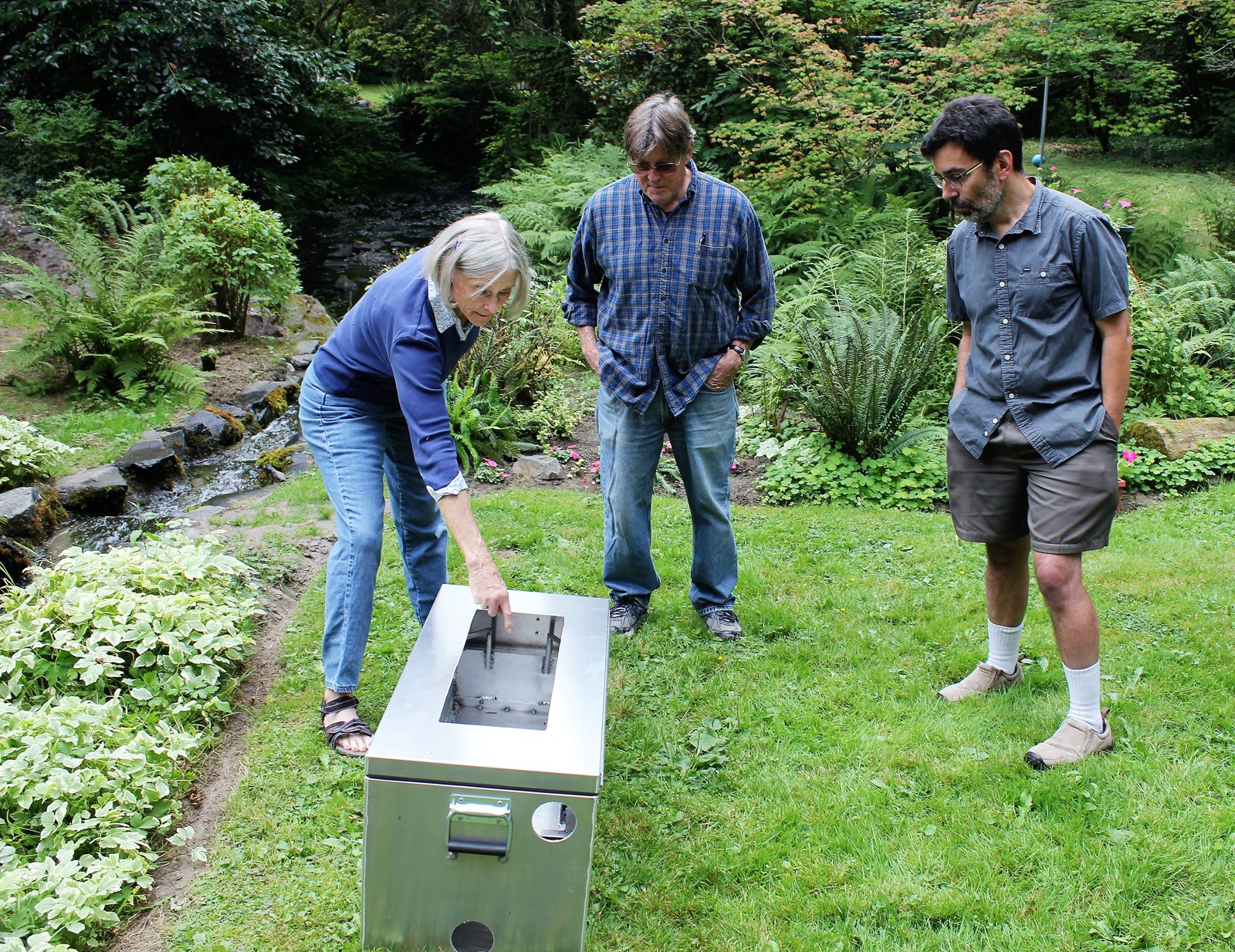
Unlike the black fabric placed around storm drains to filter runoff near construction areas, filters that Turner and his students will test are manufactured with a sponge-like material designed to catch specific pollutants.
“If the filters work in the test site and we show some good numbers, then the city of Lake Forest Park might be willing to purchase these for particular areas that have high pollutant loads — coming off Ballinger Way or Highway 522,” Turner said.
So far, the monitoring has found oil and a variety of metals, expected to wash off roadways and into the storm drains. Nutrient pollutants, such as phosphorous from fertilizers, yard waste and pet waste, also show up. The researchers were surprised to find higher-than-expected levels of zinc and surmised that it could be from products used to kill moss, Turner said.
Although Jensen talks of restoring kokanee, when he has a chance he explains the only verifiably native kokanee populations in the larger watershed are in Lake Sammamish. Lake Washington “kokanee” are genetically complicated. They might include non-migrating sockeye known as “residuals” or fish of uncertain ancestry he calls “mystery nerka.” The nerka spawn in North Creek, which runs through the UW Bothell wetlands, and in the Sammamish River, which connects Lake Washington and Lake Sammamish.
They’re kokanee-like and probably the best source of eggs for the incubator, Jensen said. “I’d like to get some version of kokanee back in here, and these streams historically have been well-suited to it. So we just need to put the eggs and the lake together.”
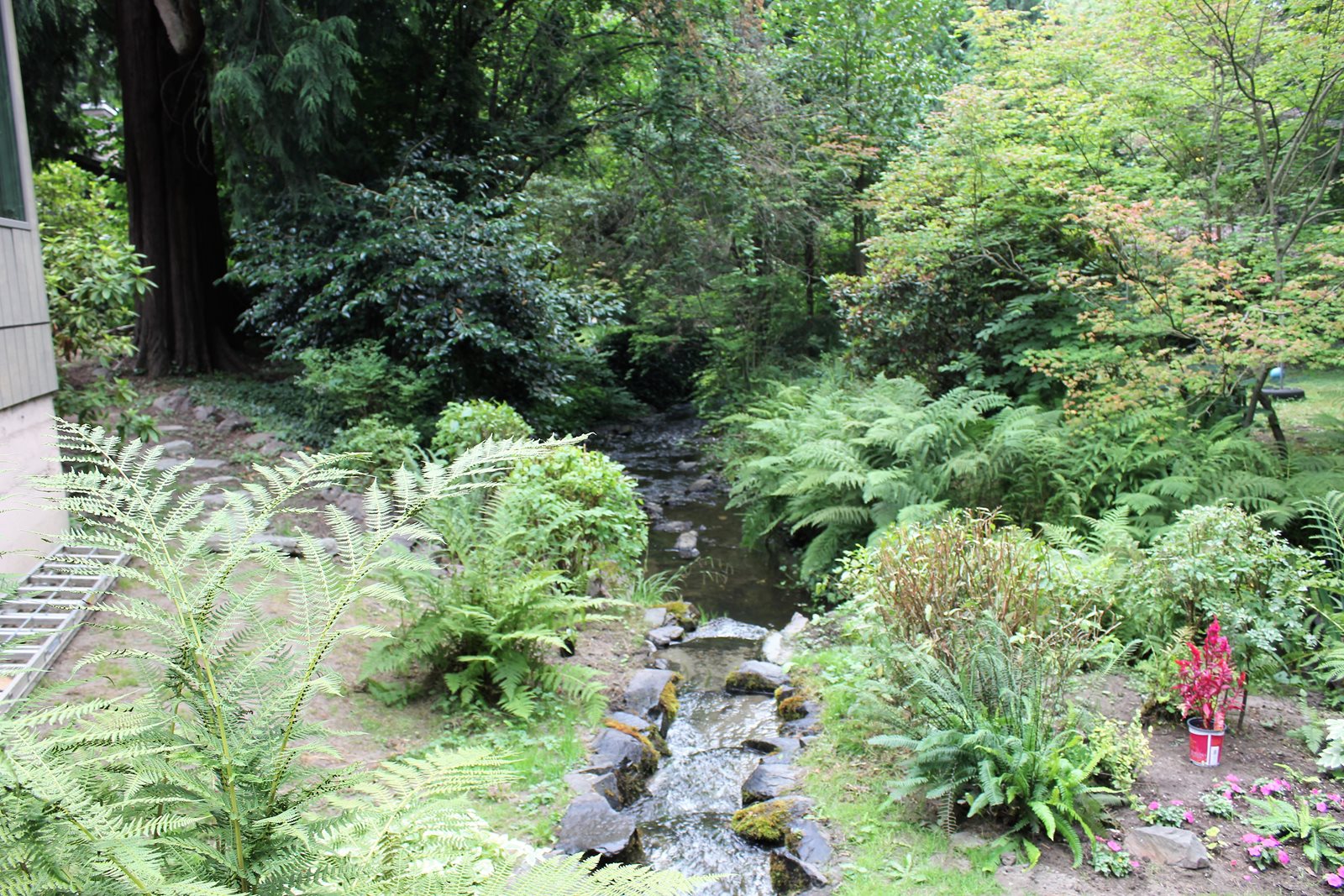
Even the kokanee-like fish could be six or seven years away. The first eggs in the incubator will likely be coho salmon. They are more readily available and used in the Salmon in the Schools program, already approved by regulators. Coho, also known as silver salmon, migrate to the ocean. The kokanee will spend their lives in Lake Washington, feeding on small zooplankton, growing to less than a foot in size and returning in three years to their stream of origin to spawn and die.
Mike Miller and Quinn Moldestad are two of Jensen’s students working on the project. Moldestad, a 2018 graduate in Biology finishing classes this summer, helped design and build the incubator. He also applied for permits from the city and Army Corps of Engineers, which regulates activities that impact waterways. He expects the experience will help as he applies for graduate school. “It’s given me field work and lab work,” he said.
Miller, a senior in Electrical Engineering, is working on sensors for the incubator to measure flow rate, turbidity and oxygen, and to tally the tiny fry as they leave the box for the wild world. “I get to apply theory in a design environment for the first time in my educational career,” Miller said.
Turner’s student Justin Felder, following work started by student Kaily Pfohl, a 2018 graduate in Environmental Studies, has been testing pollutants in Lyon Creek and the effectiveness of the new rain garden.
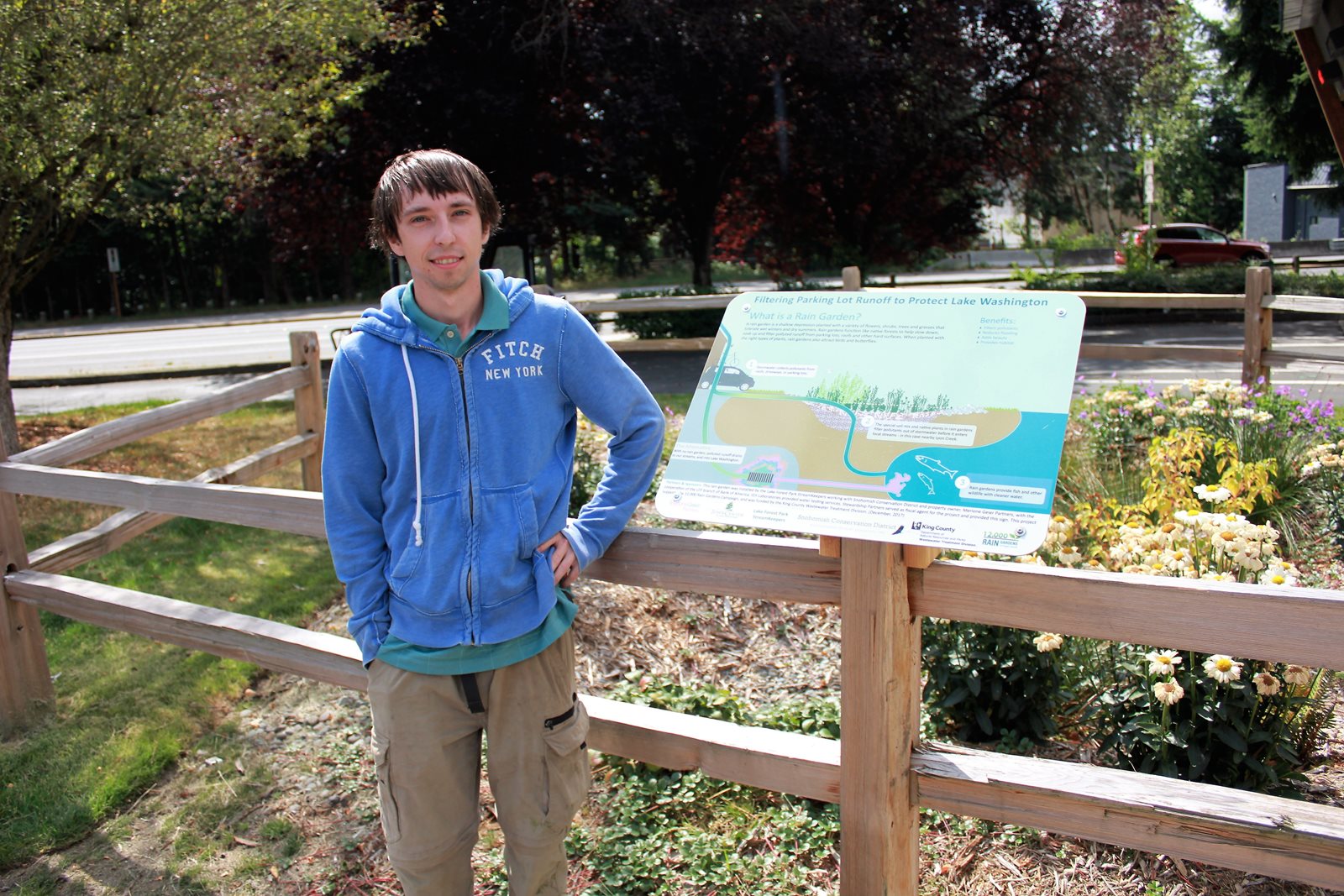
“We’re finding levels of some pollutants that well exceed the standards for surface waters, especially from the catch basin, but also in the creek itself during rain events,” Felder reported.
The senior in Environmental Studies said this work has been a valuable part of his education. “It’s given me experience writing scientific reports and practice investigating and doing research,” he said. “It’s given me the confidence to start looking at career options.”
The homeowners, Connie and Byron Barnes, haven’t seen adult salmon in their backyard stream in more than a decade. “We just hope to see some success in years to come,” Byron Barnes said.
“We would love to see them come back,” Connie Barnes said. “It’s exciting to see young people carry the torch and make it better. Our generation probably messed it up, and now it’s time to do something about it. They’re excited about it, and that’s great.”
